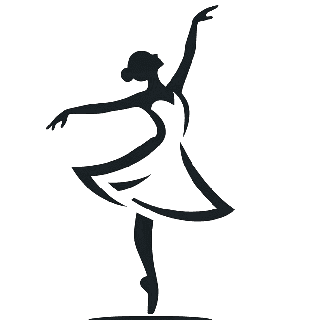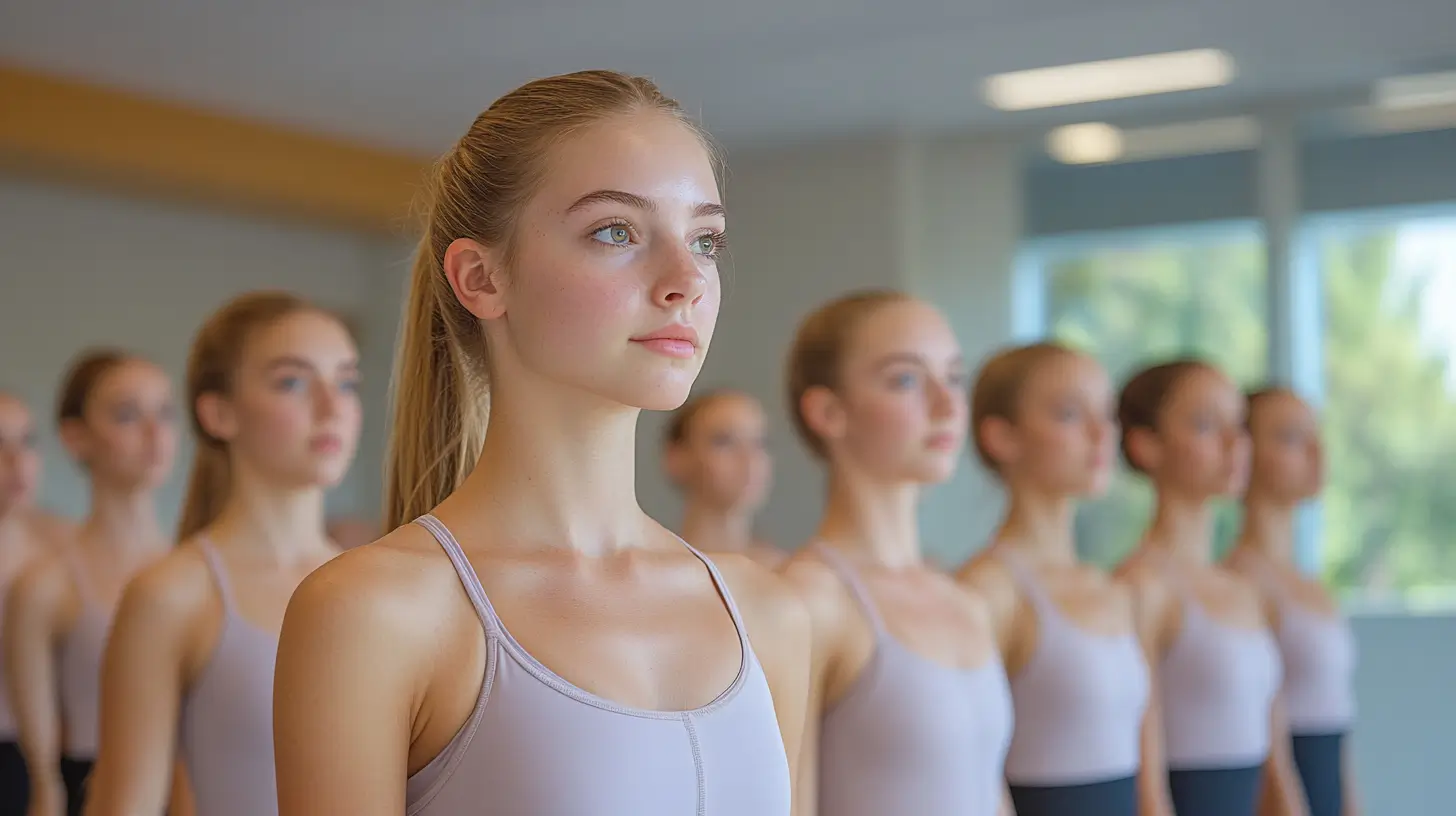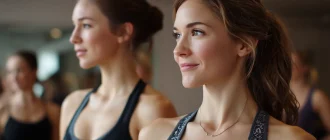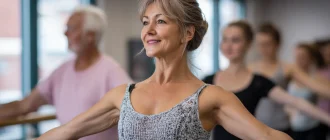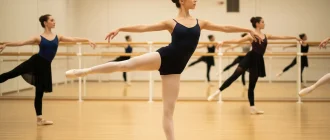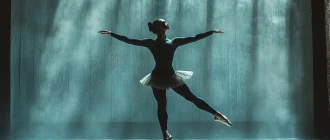A ballet barre class is a fitness workout often taught by professional dancers. It blends ballet, dance, yoga, and pilates. This article explains what to expect, the key exercises taught, and the benefits of joining a class.
Graceful Insights
- Ballet barre classes combine ballet, yoga, and pilates to enhance strength, flexibility, and balance without requiring prior dance experience.
- Key components of a ballet barre class include a warm-up, core strength and balance exercises, and stretching routines that reduce injury risk.
- Ballet barre classes are accessible to all fitness levels, offering adaptations for beginners and those with health concerns. They promote overall fitness and well-being.
Art de Podcast
What is a Ballet Barre Class?
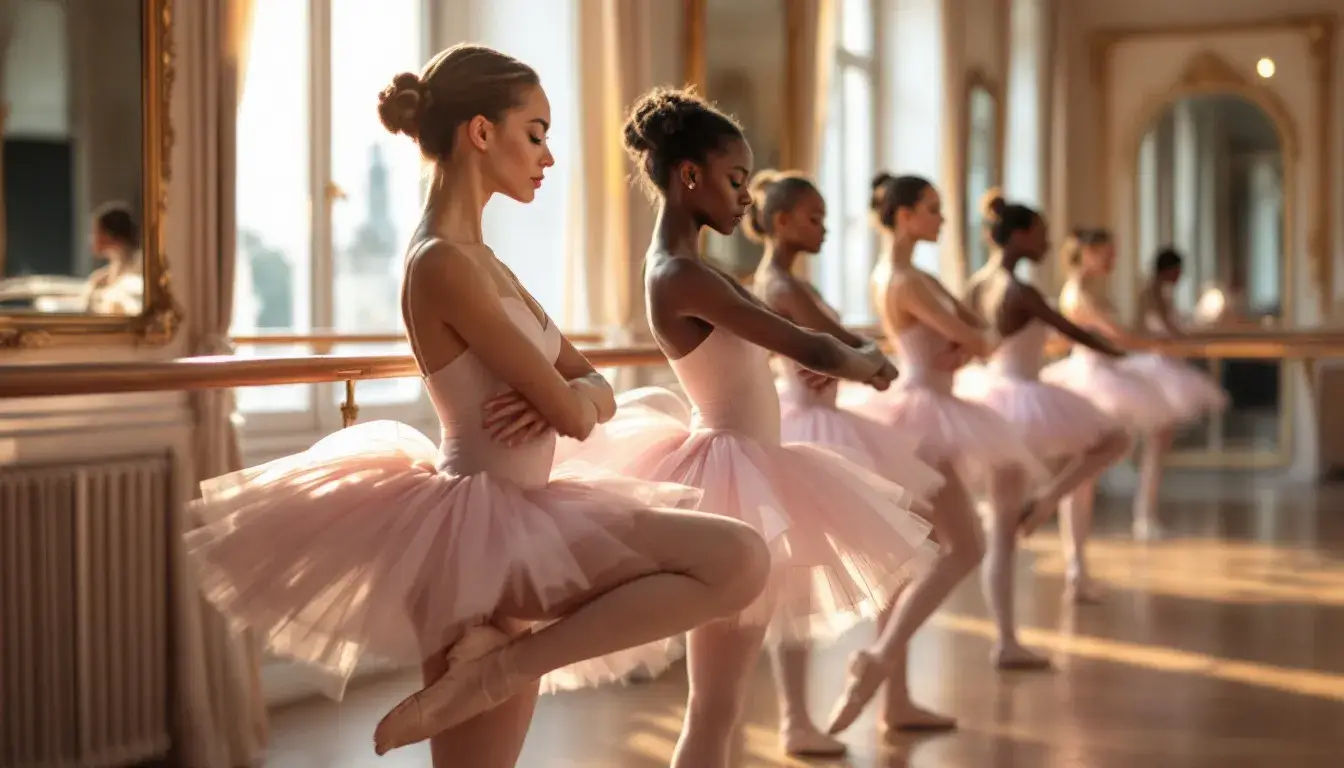
Ballet barre classes combine elements from ballet, dance, yoga, and pilates to create a comprehensive workout that serves multiple fitness goals. Through a series of barre exercises, these classes are designed to strengthen muscles, improve flexibility, and develop proper technique. Typically, 70-80% of the class is conducted at the barre, making it a focal point for body alignment and movement. The structure and content of ballet barre classes can vary based on the methodologies of different ballet schools.
Fusing these disciplines allows participants to do barre work and enjoy the benefits of ballet training without needing prior dance experience. The structure of a ballet barre class promotes overall fitness, making it an ideal choice for those seeking to improve their strength, flexibility, and balance while enjoying a fun and dynamic workout.
Key Elements of a Ballet Barre Class
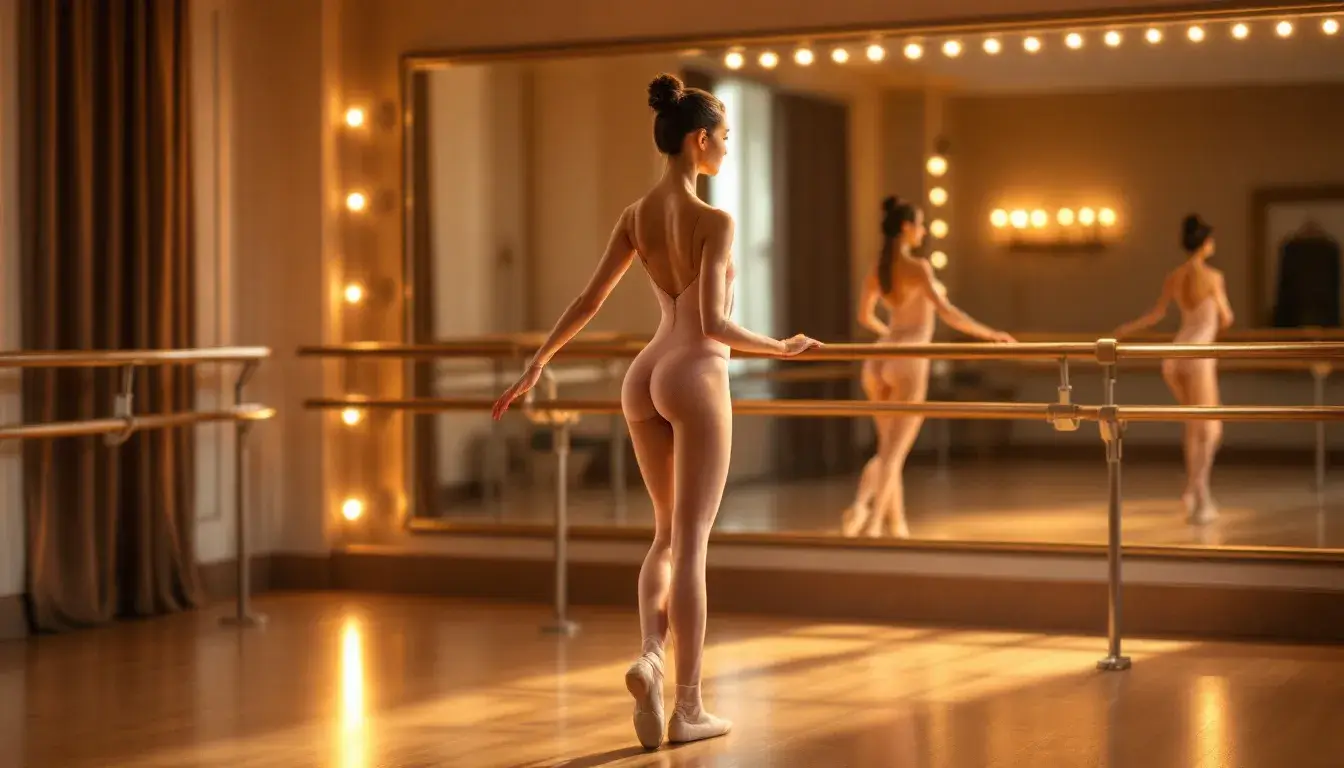
Ballet barre classes incorporate key elements that contribute to a well-rounded fitness routine. Each ballet class typically begins with a warm-up to prepare the body for more vigorous exercises. Following the warm-up, participants engage in core strength and balance exercises crucial for maintaining stability and control during ballet movements.
Stretching and flexibility routines are also integral parts of ballet barre training. These exercises improve range of motion and help prevent injuries, allowing participants to perform various ballet movements safely and effectively. Professional ballet dancers often guide these exercises, providing high-quality instruction and technique.
Each key element’s significance in a ballet barre class will be explored in more detail.
Warm-Up Exercises
Warm-up exercises are a fundamental component of ballet barre training. Common warm-up activities include tendus and demi pliés, which help prepare the body for vigorous movements. These exercises are crucial as they prepare the muscles and joints for the demands of the workout, reducing the risk of injury.
Tendus and dégagés, in particular, are essential for warming up the feet and lifting the legs, aiding overall foot articulation. These quick movements enhance flexibility and improve muscle control, setting the stage for more advanced ballet exercises later in the class.
Core Strength and Balance
Core strength and balance are pivotal in ballet barre classes, as they lay the groundwork for executing ballet techniques accurately. Exercises targeting the core help maintain stability and control during ballet movements, ensuring proper body alignment and posture. For instance, pliés are commonly performed to strengthen the arms and thighs and improve balance, which promotes better posture and body alignment.
By focusing on core strength and balance, participants can improve their overall fitness and enhance their ability to perform more advanced ballet movements with precision and control. This focus on core stability also benefits other fitness activities, making ballet barre training a versatile addition to any workout routine.
Stretching and Flexibility
Stretching and flexibility routines are integral to ballet barre classes. These exercises and stretching are designed to improve flexibility and reduce the risk of injuries, ensuring that participants can perform ballet movements safely and effectively. Consistent stretching increases flexibility and prevents muscle imbalances that can lead to injuries.
Flexibility exercises in ballet barre classes focus on controlled, small-range movements that enhance hip flexibility and strengthen the entire leg. This approach contributes to better overall ballet technique and helps dancers achieve a greater range of motion, making their movements more graceful and precise.
Essential Ballet Movements in Barre Classes
Essential ballet movements form the foundation of barre classes, promoting strength, flexibility, and coordination. These movements include:
- plies
- tendus
- dégagés
- grand battements
Each of these exercises plays a crucial role in ballet training. Practicing these fundamental movements during ballet practice helps dancers develop the skills and techniques needed for more advanced ballet exercises.
Let’s explore these essential ballet movements to understand their importance and how they contribute to a comprehensive ballet studio and barre workout.
Plies and Grand Plies
Pliés and grand pliés are fundamental ballet movements that involve bending the legs and knees. The grand plié, in particular, is a slow full knee bend that helps develop leg strength. These movements are essential for strengthening leg muscles and improving the flexibility of the knees and ankles, making them a core component of ballet training.
Incorporating plies and grand plies into the workout routine improves overall leg and ankle strength and flexibility. This is crucial for performing advanced ballet movements with precision and control while enhancing ankle strength.
Tendus and Degages
Tendus and dégagés are essential movements in ballet barre classes. They help warm the arms and legs and improve muscle control. Tendus involve lifting and sliding the foot along the floor, while dégagés involve lifting the foot off the floor. These movements enhance speed and precision in ballet techniques, making them vital for developing proper ballet forms.
By practicing tendus and dégagés, participants can improve their muscle control and leg strength, which is essential for executing more complex ballet movements easily and accurately.
Grand Battements
Strong leg extensions characterize grand battements and are crucial for developing power and control in ballet. These movements focus on high leg extensions, contributing to increased leg strength and flexibility, which is essential for various ballet performances.
Incorporating grand battements into ballet training routines enhances overall technique and performance, allowing dancers to achieve more powerful and controlled leg movements.
Center and Floor Exercises
Following the barre work, center, and floor exercises are essential to a traditional ballet class. These exercises help ballet dancers develop strength, control, and technique, preparing them for more complex movements and choreography.
Benefits of Ballet Barre Fitness Classes
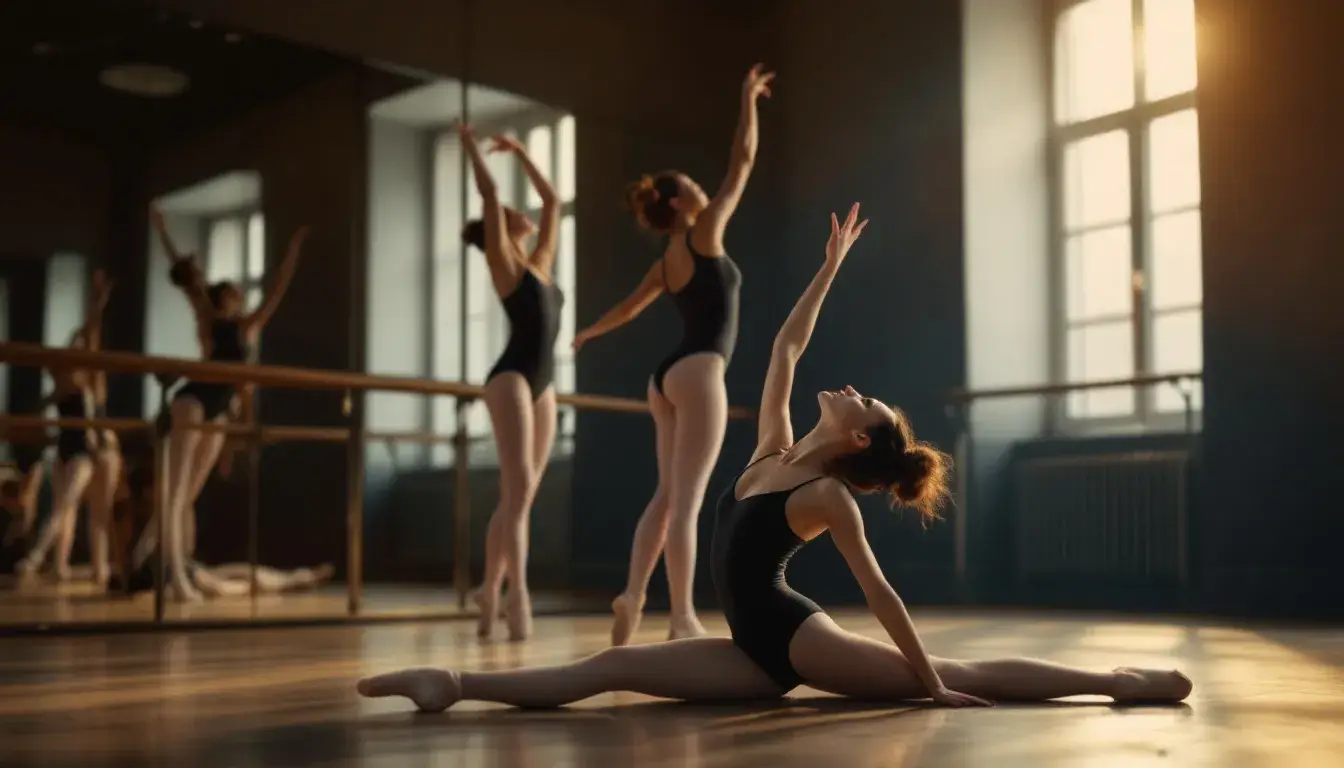
Ballet barre fitness classes offer numerous benefits that go beyond traditional workouts. One primary advantage is that it focuses on lengthening and toning muscles while improving flexibility. Participants often notice improved muscle tone and a stronger physique after regularly attending barre classes.
Moreover, the small, slow, controlled movements emphasized in barre exercises effectively enhance muscle endurance and strength. This approach helps in injury rehabilitation by promoting core strength and proper alignment, making barre classes suitable for individuals with health concerns or injuries. Incorporating barre work into your routine can further enhance these benefits.
Regular attendance in barre classes helps participants better understand body mechanics and muscle engagement, contributing to improved overall fitness. The stretching routines in ballet barre classes focus on crucial areas, such as the hips and lower back, to maintain proper alignment and turnout, and even enhance flexibility.
Who Can Take a Ballet Barre Class?
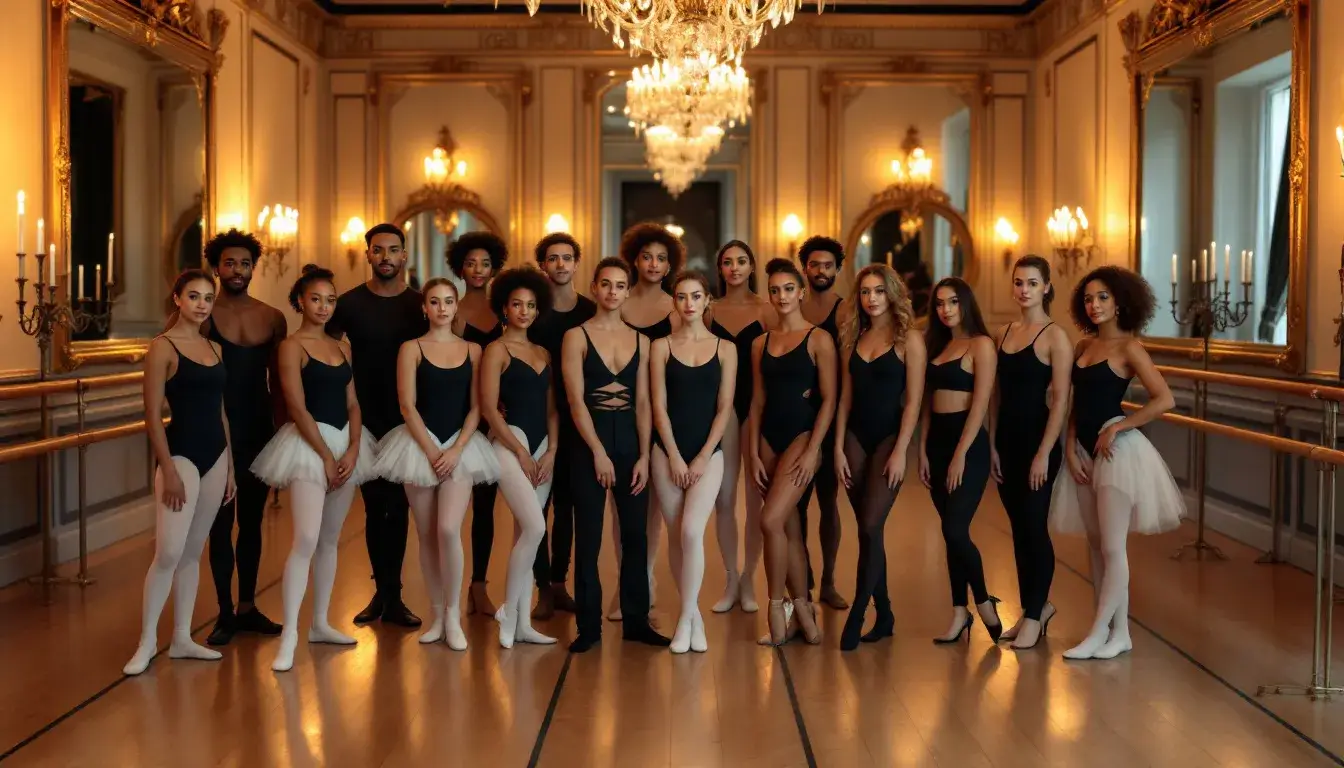
Ballet barre classes are accessible to individuals of all fitness levels, including those without a dance background. These classes cater to people of all ages and fitness backgrounds, making them welcoming and inclusive. Whether new to exercise or an experienced fitness enthusiast, you can benefit from the structured and adaptable workouts offered by professional dancers in barre classes.
No prior dance experience is necessary, allowing beginners to join comfortably and progress at their own pace. The low-impact nature of various barre exercises also makes them ideal for those who want to tone their muscles without extensive choreography or prior dance experience. Modifications are available to suit different fitness levels, ensuring everyone can participate and enjoy the benefits of ballet barre training.
What to Expect in Your First Ballet Barre Class
When attending your first ballet barre class, you must arrive 10-15 minutes early to check in and settle before class starts. Classes typically last around 50 minutes and focus on low-impact, full-body workouts designed to enhance strength, flexibility, and balance.
Introductory and other classes often cover basic movements and terminology to help newcomers feel more comfortable. Instructors then guide participants through exercises that emphasize small, controlled movements, promoting heightened body awareness and mental focus, similar to the benefits of yoga.
Tips for Beginners
If you’re new to ballet, here are some tips to help you get started:
- Start with a beginner’s class: look for a class designed for beginners and taught by an experienced instructor.
- Focus on technique: Good technique is essential for safe and effective dancing. Focus on proper alignment, turnout, and movement.
- Regular practice will help you develop strength, flexibility, and technique.
- Listen to your body. If you feel tired or are experiencing pain, take a break and rest. It’s better to err on the side of caution and prioritize your safety and well-being.
- Have fun: ballet is a beautiful and rewarding art form. Enjoy learning and improving, and don’t be afraid to make mistakes.
By following these tips, you can set yourself up for success and enjoy the many benefits of ballet, including improved strength, flexibility, coordination, and a sense of discipline and accomplishment.
How to Prepare for a Ballet Barre Class
Preparing for a ballet barre class involves physical readiness and mental focus. Appropriate attire is essential for a successful class experience. Comfortable clothing, such as leggings and a workout top, is recommended to allow a full range of movement during barre exercises.
The necessary equipment, such as a yoga mat for floor exercises and resistance bands for strength training, enhances the great workout experience. We will explore preparation tips in more detail.
Appropriate Attire
Fitted and stretchy clothing is recommended for ballet barre classes, as it allows for a full range of motion during exercises. Tight-fitting clothing like leggings and fitted tops ensures maximum performance and comfort, while low-impact sports bras provide adequate support given the moderate intensity of the workout.
Footwear options may vary, with many participants preferring to wear socks or go barefoot for better grip and comfort during the class. Choosing the right attire can significantly enhance your overall experience and confidence in a ballet barre class.
Necessary Equipment
A yoga mat can be beneficial for comfort and stability during floor exercises in barre classes. This equipment provides cushioning and support, making it easier to perform barre exercises that require lying down or kneeling.
Resistance bands are also valuable tools in barre classes. They contribute to strength training and flexibility exercises. A yoga mat and resistance bands can create a comprehensive and effective workout routine in ballet barre classes.
Finding the Right Ballet Barre Class for You
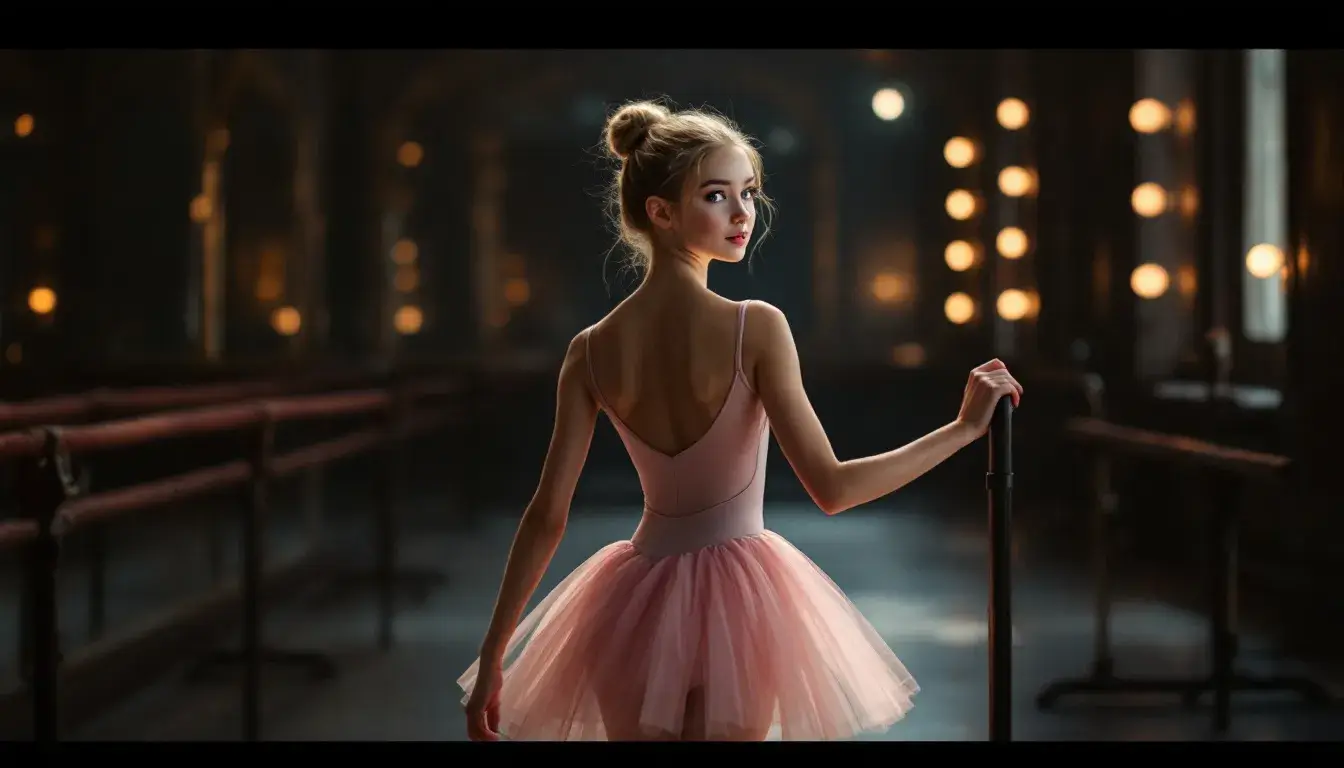
Finding the right ballet barre class involves considering attire, footwear, and class structure. Standard attire for women typically includes leggings, a tank top, and a sports bra, with the option to go barefoot or wear grippy socks for better traction and safety.
Footwear options may include ballet slippers or grip socks designed specifically for barre classes to enhance performance while maintaining safety. Choosing the right ballet class top that fits your schedule and fitness level can improve your comfort and confidence, making your entire barre class experience more enjoyable and effective.
Testimonials and Success Stories
Ballet barre classes have positively impacted numerous individuals, helping them achieve their fitness goals while enjoying the process. Participants have reported increased body confidence and improved physical fitness after regularly attending ballet barre classes.
Success stories include individuals who transformed their bodies, toning and improving flexibility, showing remarkable improvements in their overall well-being. Many have also experienced enhanced mental well-being and reduced stress levels due to their commitment to ballet barre classes.
| Aspect | Overview/Description | Examples/Notes |
|---|---|---|
| Definition | A low‐impact workout that fuses ballet, Pilates, and yoga techniques using a ballet barre as a support tool for proper alignment and control. | Emphasizes small, pulsing, isometric movements with high repetitions. |
| History & Origins | It evolved from classical ballet training and was popularized as a fitness method by ballerina Lotte Berk in 1959. | Expanded via studios such as Pure Barre, The Bar Method, and Physique 57. |
| Class Structure | A 45–to 60-minute session typically includes a warm-up, extensive barre work (using the barre for stability), center work (dance-based movements), and cool-down stretches. | Music and instructor cues create a rhythmic, motivating atmosphere. |
| Typical Exercises | Includes pliés, tendus, degagés, rond de jambes, petits battements, grand battements, relevés, and adagio sequences—all designed to target and tone the lower body and core. | The focus is on controlled, precise movements that progressively fatigue targeted muscle groups. |
| Equipment | It primarily uses a fixed or portable ballet barre, light weights, resistance bands, yoga straps, and occasionally exercise balls. | Often performed barefoot or in non-slip “grip” socks for better floor traction. |
| Benefits | It enhances muscle tone, strength, flexibility, balance, and posture; reinforces core stability and proprioception; and is gentle on joints, making it ideal for rehabilitation. | It is a complementary workout to build endurance and stability without the strain of heavy lifting. |
| Limitations | Due to its focus on endurance and small-range motions, it may not produce the same maximal strength or cardiovascular gains as heavy resistance or high-impact workouts. | It is best incorporated into a balanced exercise routine that includes both aerobic and traditional strength training. |
| Target Audience | Suited for dancers, fitness enthusiasts, beginners, and individuals recovering from injury, popular among women, with increasing appeal to all ages and fitness levels. | Modifications allow for adaptations for pre- and postnatal participants, seniors, and those with specific limitations. |
| Modifications & Variants | Classes can be adapted by adjusting repetitions, adding light weights, or modifying the range of motion; many options are available in person and online. | Fusion classes may blend HIIT or full-range movements to boost strength benefits alongside endurance work. |
| Trends & Fusion | Emerging trends include digital and on-demand barre classes, integration of advanced strength elements, and fusion with other fitness modalities to create versatile training routines. | Studios are evolving offerings to include more progressive overload options and technology-driven engagement. |
This table encapsulates the key features and considerations of Ballet Barre classes, making it easier to understand their unique place within the fitness niche.
Resume
In summary, ballet barre classes offer a unique and comprehensive workout that combines elements of ballet, dance, yoga, and pilates. These classes focus on strengthening muscles, improving flexibility, and developing proper technique, making them suitable for individuals of all ages and fitness levels. Whether you are a seasoned dancer or a beginner, ballet barre classes provide numerous benefits, including improved muscle tone, flexibility, coordination, and overall fitness.
As you embark on your ballet barre journey, remember to prepare adequately by wearing appropriate attire and having the necessary equipment. With dedication and consistency, you can achieve your fitness goals and enjoy the many positive changes that ballet barre training brings. So why wait? Step into the world of ballet barre and experience the transformation for yourself.
Frequently Asked Questions
Do I need any dance experience to join a ballet barre class?
No dance experience is needed to join a ballet studio or barre class. These sessions cater to dancers of all fitness levels, allowing beginners to progress at a comfortable pace.
What should I wear to a ballet barre class?
Wear fitted and stretchy clothing, such as leggings, a workout top, and a supportive, low-impact sports bra, for a ballet barre class. You can go barefoot, wear socks, or opt for grippy socks for enhanced grip and comfort.
What equipment do I need for a ballet barre class?
In a ballet barre class, you need a yoga mat for comfort, stability, and resistance, and resistance bands for strength training and flexibility exercises.
What can I expect during my first ballet barre class?
During your first ballet barre class, you can expect to watch and engage with dancers in a low-impact, full-body workout that lasts around 50 minutes, focusing on basic movements and terminology. Arriving 10-15 minutes early will help you check in and feel more comfortable.
What are the benefits of ballet barre fitness classes?
Ballet barre fitness classes enhance muscle tone, flexibility, and overall fitness while promoting core strength and proper alignment, making them beneficial for injury rehabilitation. Participants frequently experience boosts in confidence, improved body mechanics, and reduced stress.
